Dealers: Honda Transmission Fluid Change
You may be familiar with Faruk Kugay, one of the ENEOS Ambassadors who competes in Formula Drift. He also has a shop at Sonoma Raceway called DEVSPEED. They work on street cars, race cars, drift cars… like a lot of our Garage dealers, they “kind of do everything,” including alignments and suspension work, but they also do basic maintenance. Curious about how another ENEOS Garage runs a Honda transmission fluid change? Follow along as Kugay and DEVSPEED change the CVT (continuously variable transmission) of a 2017 Honda Civic, showing the step-by-step of how they do it and what issues they try to avoid. You can also watch the video with these instructions.
Steps for transmission fluid change:
- Getting started – undertray removal
- Filters—FYI
- Work warm
- Open the fill plug
- Remove drain plug
- Check drainage
- Crush washer change
- Refill transmission fluid
- About the interval
- How a CVT transmission works
- Finishing the service
Getting started – undertray removal

Let’s get this out of the way first!
Filters—FYI

A couple interesting things about doing a CVT fluid change, which you may have noticed: First, as you know, there are two filters for the transmission: one underneath the pan (if you were to remove the pan), and also one on the side by the cooler. To confirm, neither of those gets changed unless there’s something wrong with the transmission, what we’re doing is just a drain and fill procedure, 3.7 quarts every 25,000 miles or 36 months.
Work warm
Second thing is they are working on a warm car. It had been driving and pulled in hot, and that’s an important thing to remember when doing the drain and fill on a car. The fluid needs to be hot because the fluid’s viscosity decreases and it becomes thinner when it’s warm. This is because:
- It’ll have oil in all the right places, and
- You’ll get the most amount of fluid out of the vehicle
It should also be noted the factory service manual says it is meant to be changed while hot, so all the measurements and everything that you’re doing are meant for a vehicle that has been running and is still warm.
Open the fill plug
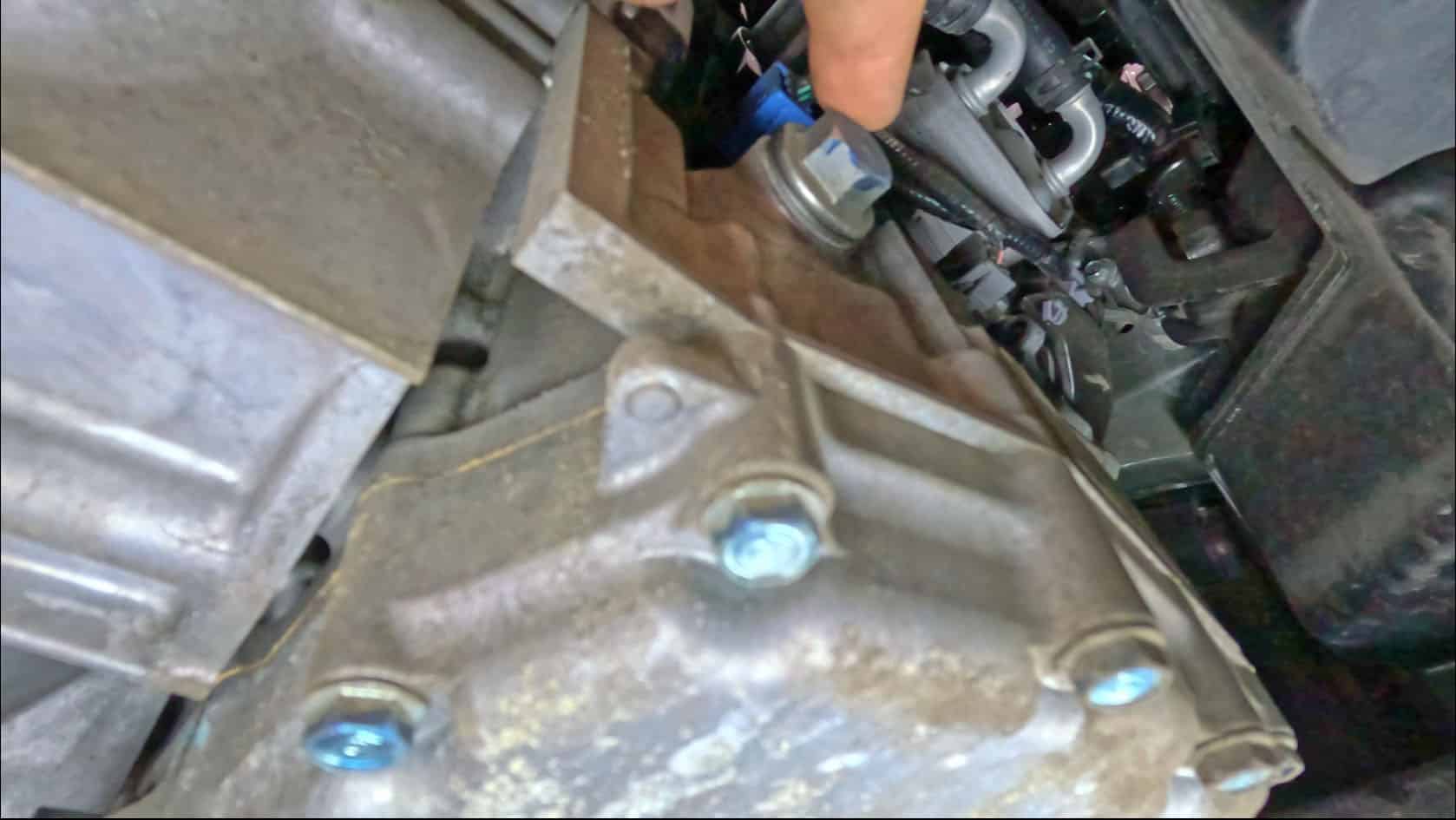
You may have observed when you’re doing a transmission fluid change, or differential, or really anything that has a sealed case, you want to make sure you are able to break the fill plug loose before you drain the fluid. So, a reminder to open the fill plug first to make sure it’s not stuck or corroded because last thing you want to do is drain the fluid out of a transmission and then not be able to fill it.
Remove drain plug
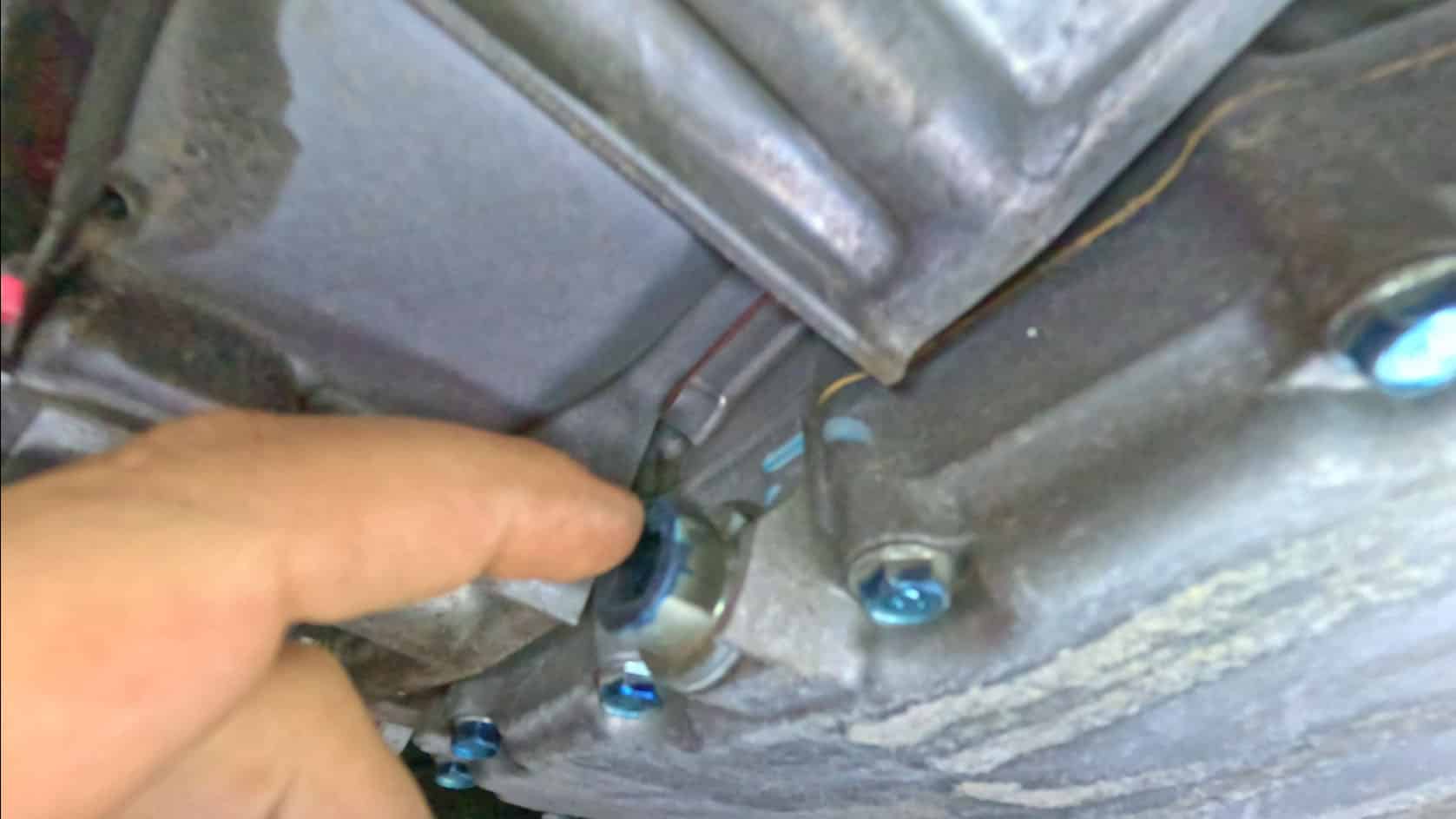
This drain port below is at the bottom, below the fill plug. Get your drainage container ready!
Check drainage
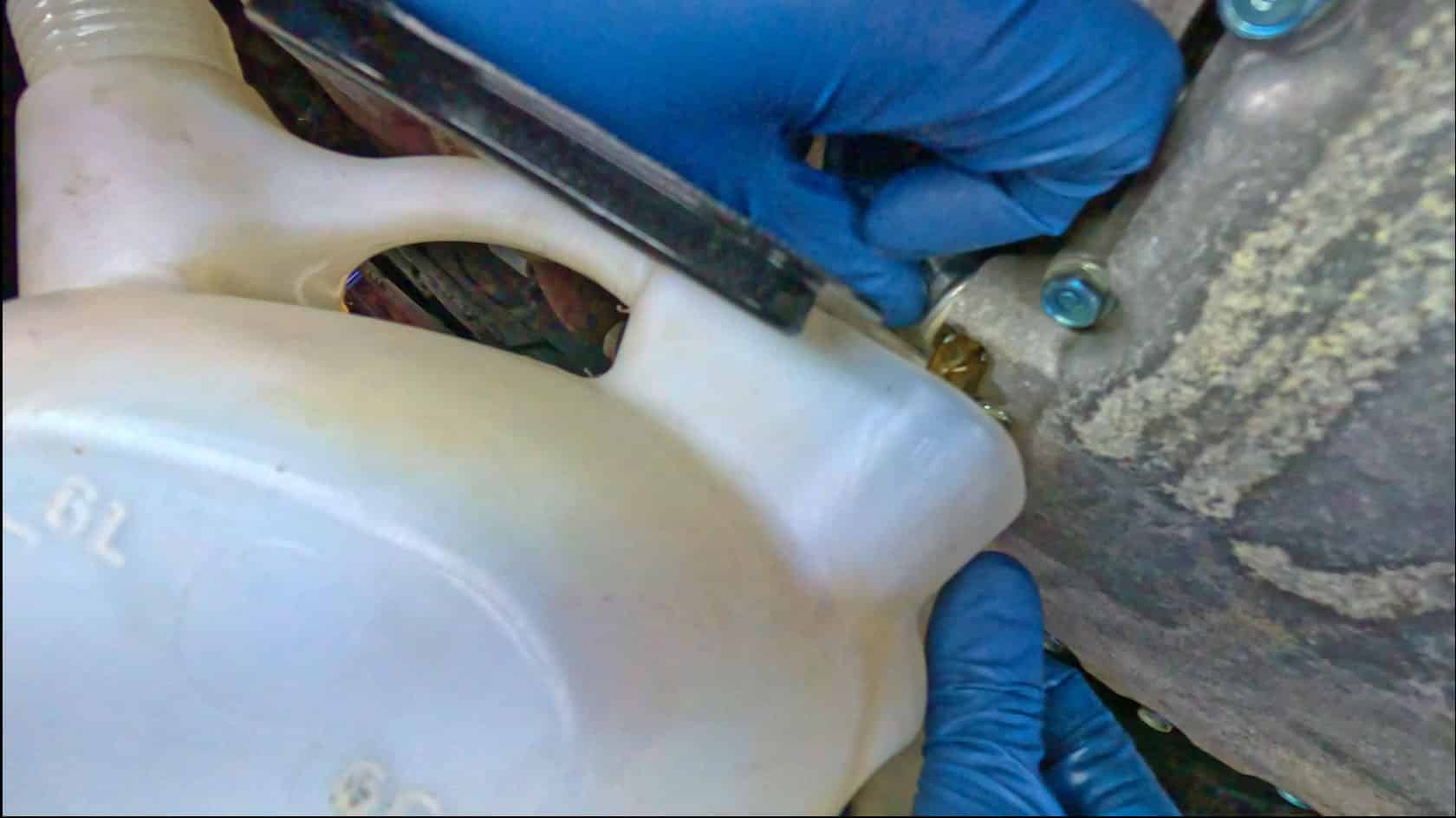
Next, a reminder to check for any foreign objects to make sure there’s no debris in the old fluid, which could indicate problems with the transmission. In this case, wow, it looks pretty good so far as it’s coming out.
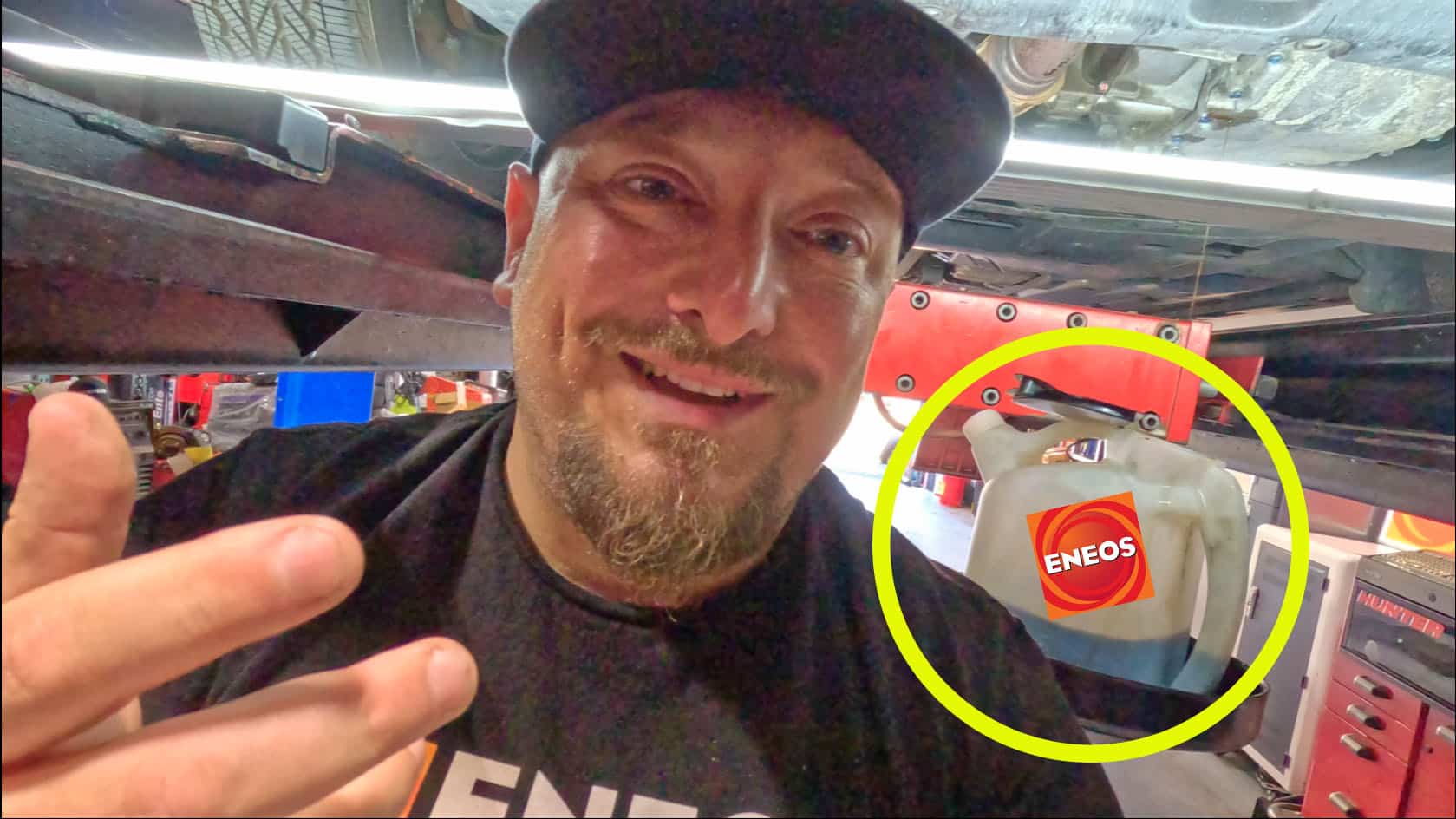
The reason DEVSPEED technician Victor is draining into one of these awesome jugs that come with their ENEOS Import Lubricant Center oil filling station is they’re trying to see how much fluid is coming out of the transmission. The drain infill is 3.7 quarts and by catching as much fluid coming out as possible they can check the fluid condition and make sure the fluid amount is what was expected.
Crush washer change

They’re also going to change this crush washer as well, so it gets a new crush washer before getting put back in. That way the torque is really what it needs to be.
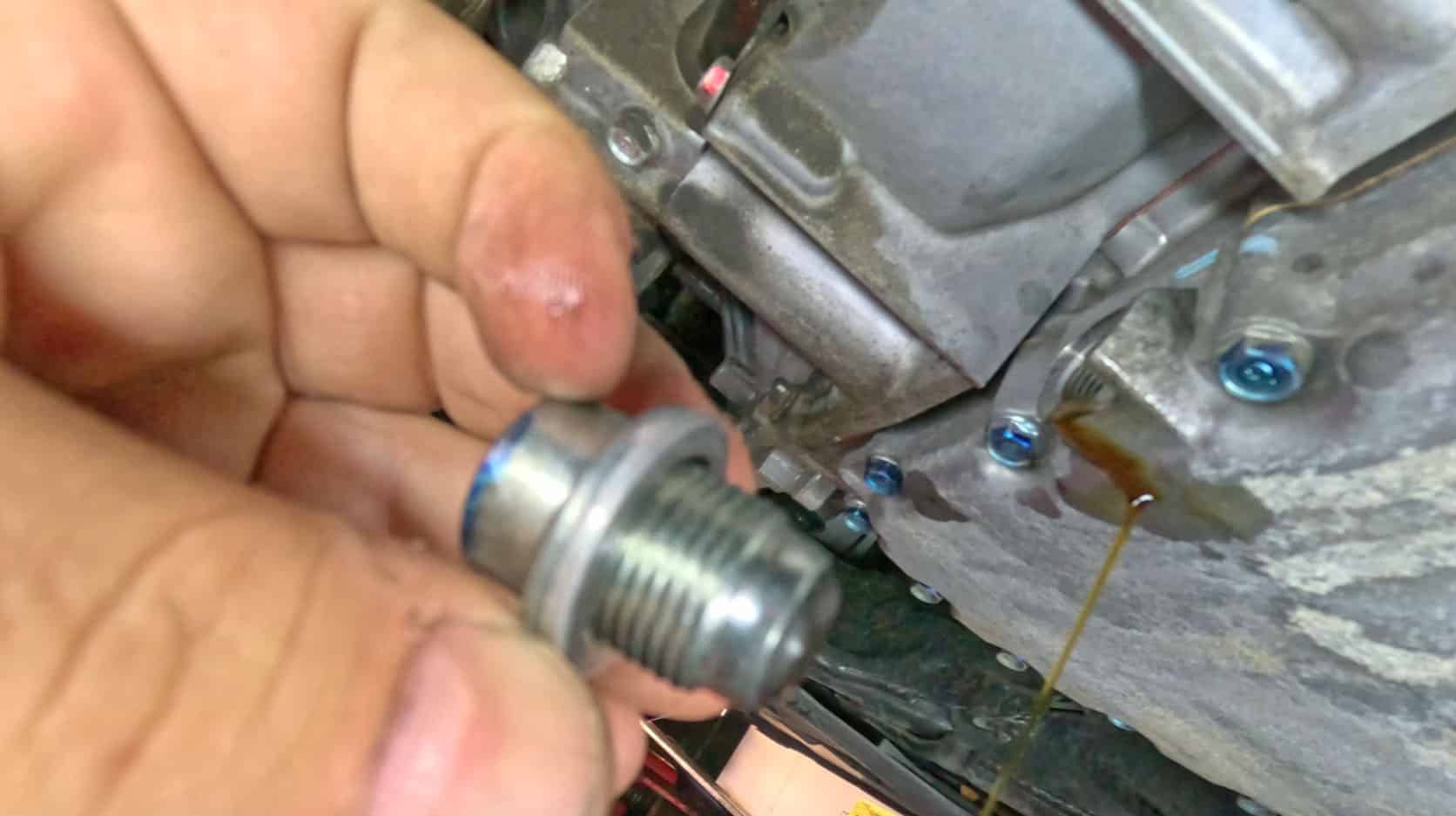
If you look at the drain plug, it has a magnetic tip on it, and it had a little bit of debris but nothing major. They just cleaned it before putting it back in.
Fill ‘er up!
For this Honda transmission fluid change in a 2017 Honda Civic they are using ENEOS ECO CVT fluid. It’s what we at ENEOS call a “broad match fluid,” which means it can be used on most CVT transmissions. A unique thing about ENEOS is that we are an OE factory fill company. The majority of new Japanese cars have ENEOS in them. ENEOS knows the specifications of Asian transmissions and engines firsthand, so we can accurately create both broad match and exact match transmission fluids.
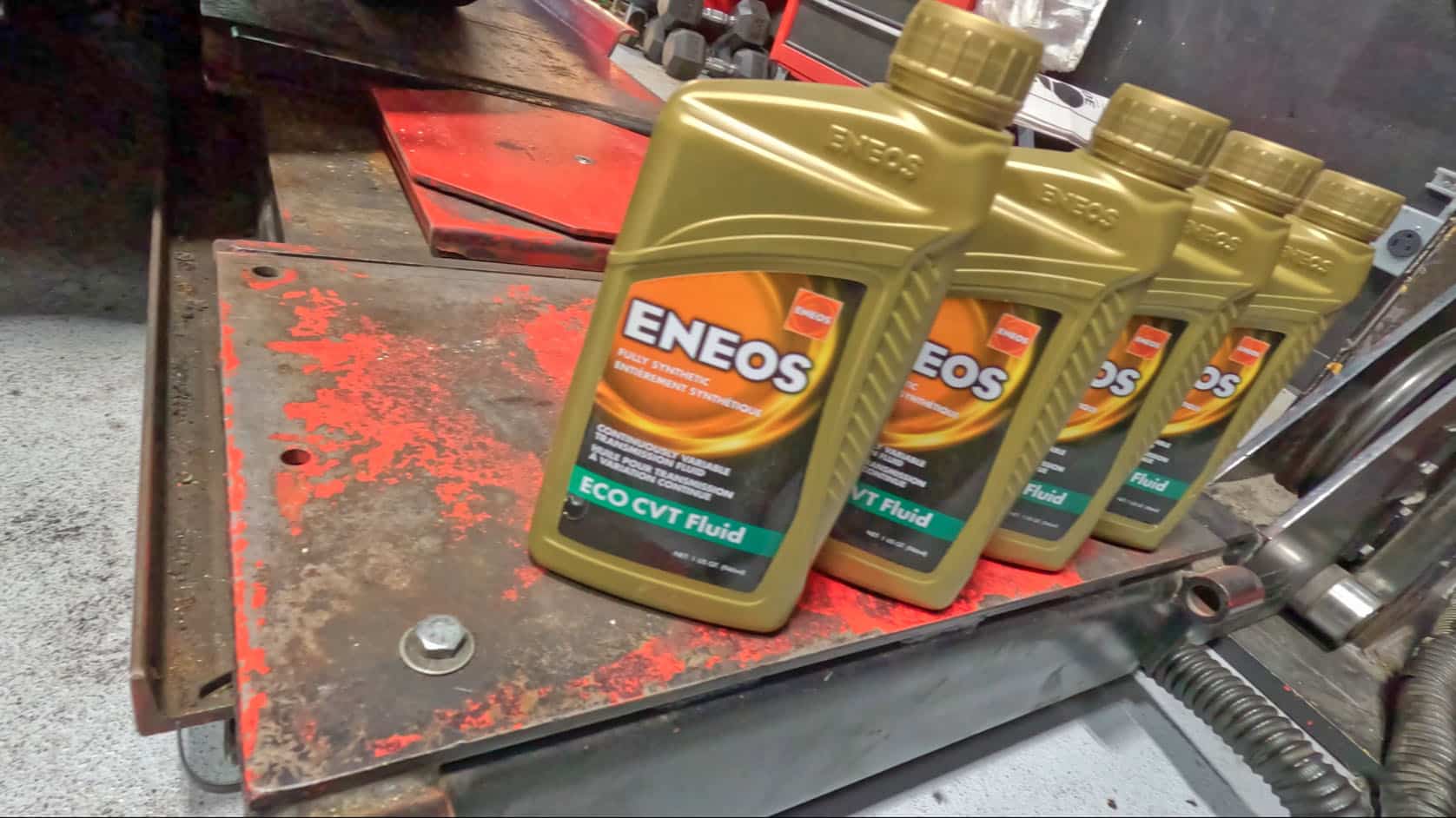
Here they go, the “magic sauce”!
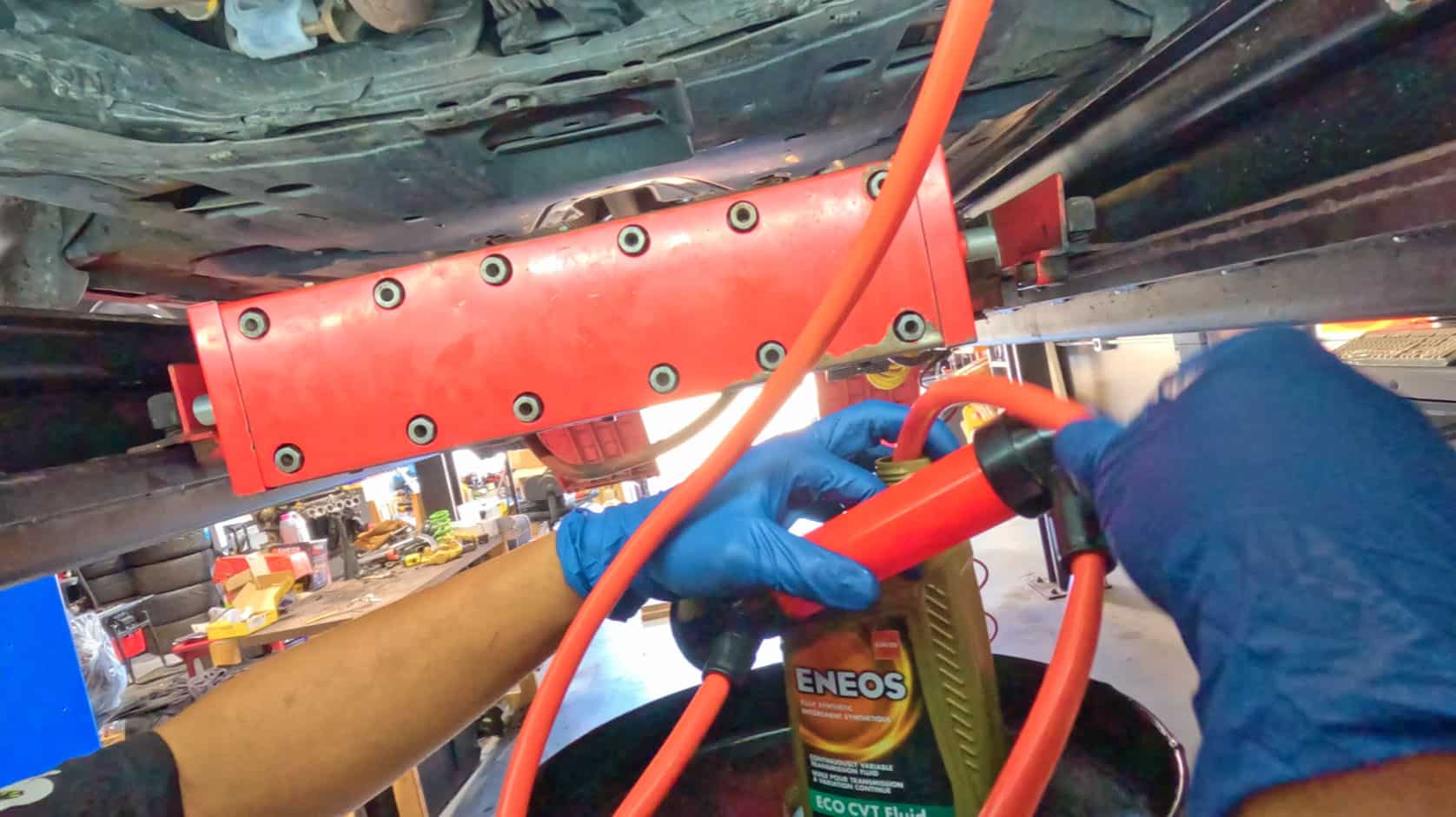
Let’s talk CVT fluid transfer. Victor likes a fluid pump, Faruk like the syringes, everyone’s got their own thing for replacing CVT fluid. Some people have the type of fillers that mount on an impact wrench; Faruk dislikes those personally because it spins it and pumps in the fluid, but the problem is every single time the top flies off or something happens and you “just end up covered in fluid.”
The other fill trick he’s used was to poke holes in the top of the bottles, run a small hose in, and pressurize the bottle. He did that until one of his buddies over-pressurized it and it blew gear oil everywhere, all over underneath the car.
So the preferred methods at DEVSPEED are now the hand pump or syringe.
About the interval
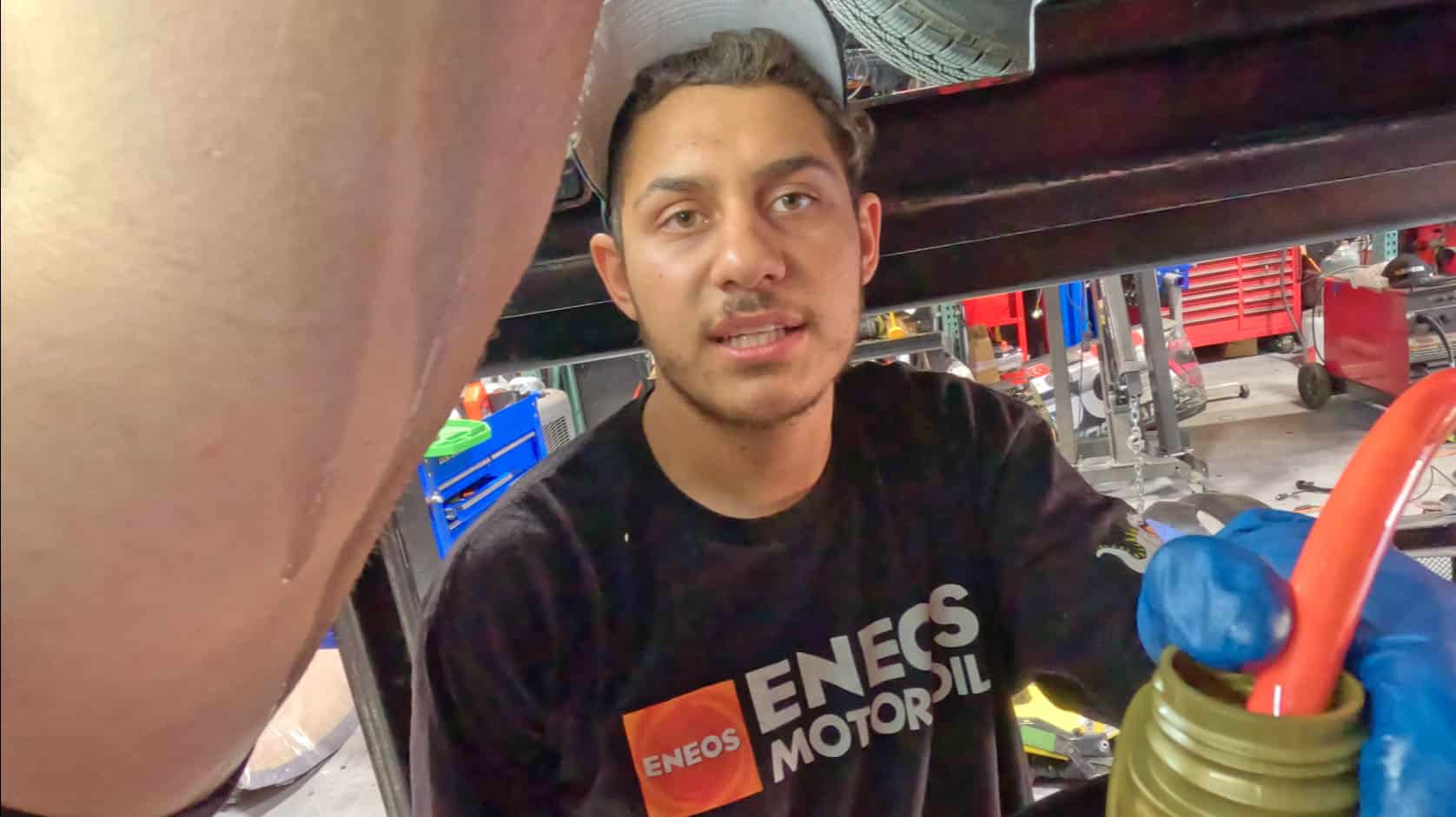
DEVSPEED service tech Victor did not originally like CVT Transmissions because some manufacturers who came out with the CVT first—in early 2000s—didn’t tell customers and service techs the accurate fluid change interval, which is much shorter than many people realized. Because it’s a chain driven style, it creates a little bit more friction that causes the transmission fluid to be burned faster. Changing at the recommended intervals should improve performance and reduce damage to components.
For this Honda Civic, it’s 25,000 miles or 36 months, and it’s a pretty simple drain and fill with some ENEOS ECO CVT.
How a CVT transmission works

The most common type of CVT, or Continuously Variable Transmission, uses a pulley system that allows an infinite variability between the highest and lowest gears with no steps or shifts.
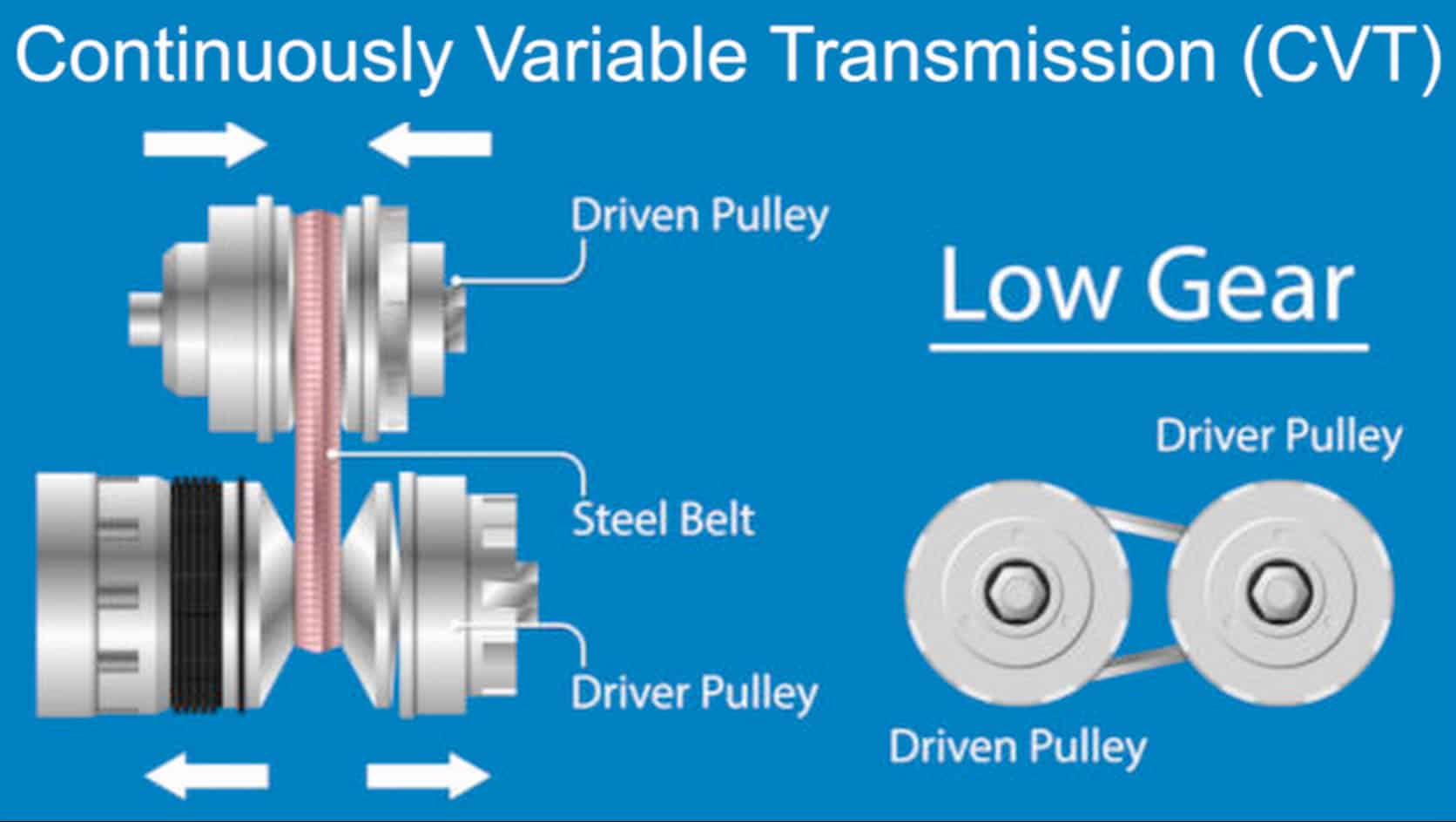
Broadly speaking, a “gear” refers to a ratio of engine shaft speed to driveshaft speed. CVTs change this ratio with a set of planetary gears, which are still described as “high” and “low” gears for the sake of convention. It’s this chain-driven pulley system that can burn fluid, meaning it should be changed based on current manufacturer recommendations. Read more about CVT Technology in our Garage dealer portal.
Finishing the service
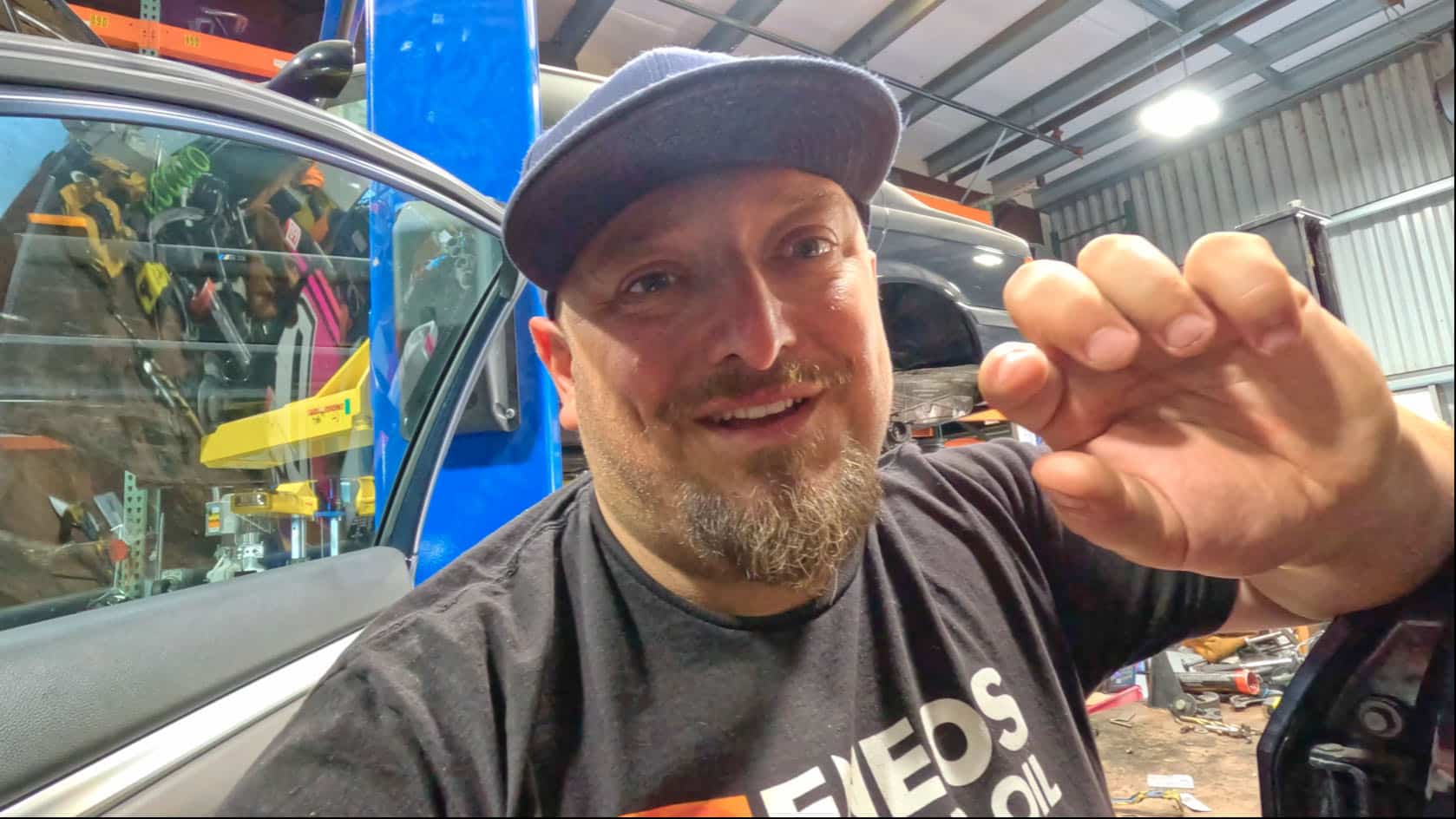
Once they fill the transmission, they snug down the fill plug, but don’t torque it down just yet. What they do first is get inside the car, start it, and warm it back up. The fan is supposed to cycle twice, which lets them know that it’s a proper running temperature, and then Victor will going to run through the gears to make sure they all get coated with fresh fluid. If everything is running smoothly, finish tightening the fill plug.
If you have any questions about ENEOS ECO CVT fluid or the Honda transmission fluid change process, drop us a line and let us know!
More about ENEOS ECO CVT fluid>
Insider basics about CVT Lubricants>
Find the ENEOS Import Lubricant Center from select ENEOS Distributors
Garage dealer program
Register as an official ENEOS dealer for free stuff, updates, and to help our customers find you. More info>


